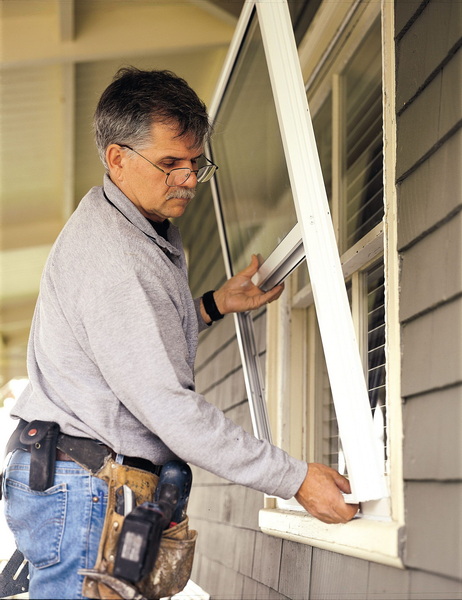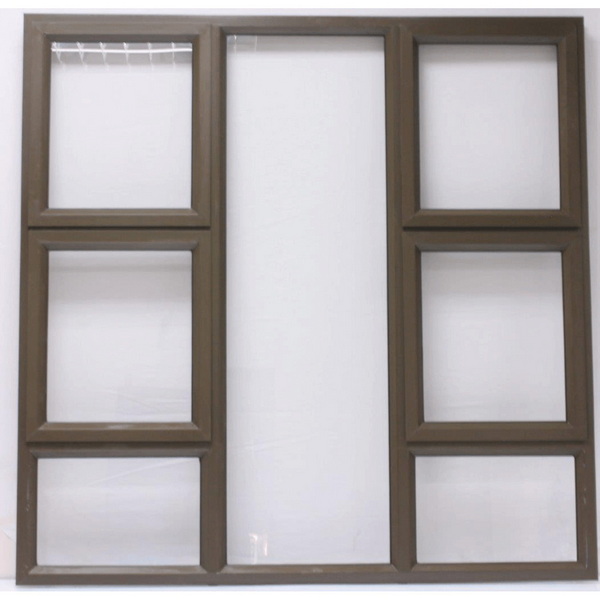English


Views: 222 Author: Dream Publish Time: 2025-01-25 Origin: Site











Content Menu
● Why Paint Aluminum Storm Windows?
● Step-by-Step Guide to Painting Aluminum Storm Windows
>> Step 2: Clean the Storm Window Frames
>> Step 4: Tape the Glass and Screen
● Additional Considerations for Painting Aluminum Storm Windows
● Maintenance Tips Post-Painting
● Advanced Techniques for Painting Aluminum Storm Windows
>> Addressing Oxidation Before Painting
>> Choosing the Right Paint Finish
● Common Mistakes to Avoid When Painting Aluminum Storm Windows
● FAQ
>> 1. What type of paint should I use for aluminum storm windows?
>> 2. Do I need to prime aluminum before painting?
>> 3. How many coats of paint should I apply?
>> 4. Can I spray paint my aluminum storm windows?
>> 5. How can I ensure my painted windows last longer?
Painting aluminum storm window frames can significantly enhance their appearance and extend their lifespan. Over time, these frames may become faded or oxidized, but with the right preparation and techniques, you can restore them to their former glory. This comprehensive guide will walk you through each step of the process, ensuring a professional-looking finish that lasts.

Aluminum storm windows are durable and low-maintenance, but they can lose their luster due to exposure to the elements. Painting them offers several benefits:
- Aesthetic Improvement: A fresh coat of paint can dramatically change the look of your windows.
- Corrosion Protection: Quality paint adds a protective layer against oxidation and rust.
- Increased Property Value: Well-maintained windows can enhance the overall value of your home.
Before starting your project, gather the following tools and materials:
- Cleaning Supplies: Mild detergent, water, sponge, and cloths
- Sanding Tools: Fine-grit sandpaper (around 400-grit)
- Primer: Self-etching primer suitable for metal
- Paint: Exterior-grade acrylic or latex paint formulated for metal
- Application Tools: Paintbrushes, rollers, or spray equipment
- Protective Gear: Gloves, goggles, and a mask
- Drop Cloths: To protect surrounding areas from paint splatters
- Painter's Tape: For masking off glass and other areas
Set up your workspace in a well-ventilated area. Lay down drop cloths to protect floors and furniture from paint drips.
Use a mixture of mild detergent and water to thoroughly clean the aluminum frames. If the surface appears chalky or has old paint residues, use steel wool or a wire brush to remove it. Rinse with clean water and dry completely. For tougher stains or grease, consider using a non-abrasive cleaner or brake cleaner that is safe for aluminum[1][2].
Lightly sand the aluminum frame using fine-grit sandpaper. This step is crucial as it creates a rough texture that helps the primer adhere better. Be careful not to scratch the glass or damage any seals.
Using painter's tape, carefully apply tape around the glass panes and screens to prevent any paint splatters.
Choose a self-etching primer specifically designed for metal surfaces. Apply a thin coat using a brush or roller, ensuring even coverage. Allow it to dry completely according to the manufacturer's instructions. This step is essential as it prepares the surface for better paint adhesion[3][4].

Once the primer is dry, apply your chosen exterior-grade paint. It's best to use multiple thin coats rather than one thick coat. Allow each coat to dry fully before applying the next one. Use a trim brush for edges and corners for better precision[5][6].
Carefully remove the painter's tape while the paint is still slightly wet to avoid peeling. Clean any excess paint from glass surfaces using a razor blade or scraper.
- Ideal Conditions: The best conditions for painting are dry days with moderate temperatures (between 50°F and 85°F). Avoid painting in direct sunlight as it can cause rapid drying that may lead to imperfections in your finish.
- Troubleshooting Common Issues:
- Bubbles: Bubbles can form if moisture is trapped underneath the paint or if it dries too quickly. Ensure that the surface is completely dry before painting.
- Drips and Runs: Apply thin coats of paint and use a brush for edges and corners. If drips occur, smooth them out with a brush before they dry.
To keep your painted aluminum storm windows looking fresh:
- Regularly clean them with mild soap and water.
- Inspect for any chips or scratches and touch up as necessary.
- Avoid using harsh chemicals that could damage the paint finish.
If your aluminum frames show signs of oxidation or pitting, it's important to address these issues before painting. Use fine-grit sandpaper or an abrasive pad designed for metal surfaces to gently remove oxidized areas[7]. This will not only improve adhesion but also ensure an even finish.
When selecting paint for aluminum storm windows, consider finishes that provide durability against weather elements:
- Acrylic Paint: Offers excellent adhesion and durability while resisting chipping and fading.
- Epoxy Paint: Provides a strong finish ideal for outdoor use due to its resistance to chemicals and weather.
- Enamel Paint: Dries hard with a glossy finish; great for high-traffic areas[8][9].
Proper curing is essential for achieving a long-lasting finish on your painted aluminum frames. Here are general drying times you should follow:
- Primer: 1 to 2 hours
- First Coat of Paint: 2 to 4 hours
- Second Coat of Paint: 4 to 6 hours
Note that environmental factors like humidity can affect these times; always refer to specific product instructions[10].
1. Skipping Primer: Always apply primer as it helps paint adhere better.
2. Not Cleaning Frames Thoroughly: Dirt can cause peeling; ensure frames are spotless before painting.
3. Painting in Poor Weather Conditions: Avoid rain or high humidity days; choose dry conditions for optimal results.
4. Using Incorrect Paint Types: Ensure you use paints specifically formulated for metal surfaces.
5. Rushing Between Coats: Allow adequate drying time between layers to prevent smudging or uneven finishes[11][12].
Painting aluminum storm window frames is an effective way to rejuvenate their appearance while providing protection against corrosion. By following these steps—cleaning, sanding, priming, painting, and maintaining—you can achieve a professional-looking finish that enhances both your windows' aesthetics and durability.

Use high-quality exterior-grade acrylic or latex paint specifically formulated for metal surfaces. These paints offer better adhesion and flexibility compared to standard paints.
Yes, applying a self-etching primer designed for metal surfaces is crucial for ensuring proper adhesion of the paint.
It is recommended to apply at least two thin coats of paint for optimal coverage and durability.
Yes! Spray painting can provide an even finish; just ensure proper masking to avoid overspray on unwanted areas.
Regular maintenance such as cleaning and prompt touch-ups will help maintain the appearance and integrity of your painted finish.
[1] https://www.doityourself.com/stry/how-to-paint-triple-track-storm-windows
[2] https://www.homebuilding.co.uk/advice/painting-aluminium-windows
[3] https://energyshieldwindowsanddoors.com/aluminum-window-cleaning-maintenance-dos-donts/
[4] https://windowhardwaredirect.com/en-de/blogs/news/the-ultimate-guide-on-how-to-paint-aluminum-windows-for-a-lasting-finish
[5] https://www.thepaintshed.com/tips-advice/how-to-paint-aluminium-window-frames
[6] http://service-aluminum.com/sa-prodsheets/SACI_care_maintenance.pdf
[7] https://www.finehomebuilding.com/1996/07/01/painting-aluminum-storm-windows
[8] https://www.livingareallife.com/posts/how-paint-aluminium-door-window
[9] https://home-wizard.com/article/storm-window-care
[10] https://newlookcoatings.co.nz/can-you-paint-aluminium-window-frames/
[11] https://doorsixteen.com/2014/05/05/painting-aluminum-storm-windows/
[12] https://newlookcoatings.co.nz/how-to-paint-faded-aluminium-windows/
[13] https://expresswindowsgroup.co.uk/caring-for-aluminum-windows-tips-and-tricks/
[14] https://www.workshop.bunnings.com.au/t5/Best-Advice/What-is-the-best-way-to-paint-aluminium-windows/ta-p/81622
[15] https://www.youtube.com/watch?v=FjrhV9IPTKE
[16] https://www.thewindowdepotllc.com/how-to-properly-maintain-and-clean-your-storm-windows/
[17] https://industrialmetalservice.com/metal-university/how-to-paint-aluminum/
[18] https://www.mensjournal.com/pursuits/home-living/how-to-clean-maintain-wash-storm-windows
[19] https://www.finehomebuilding.com/forum/painting-aluminum-storm-windows
[20] https://www.allweatheraa.com/wp-content/uploads/2021/04/Install_Instructions/All-Weather-Care-Maintenance-Guide.pdf
[21] https://www.youtube.com/watch?v=KdanPL9bamg
[22] https://www.getproedge.com/blog/p.190710016/taking-pane-staking-good-care-of-your-residential-storm-windows/
Seven Requirements for External Doors And Windows of Passive Rooms
How Much Do You Know about The Design Standards for Aluminum Alloy Door And Window Dimensions?
Welding Vs Stainless Steel Fabrication: Understanding The Manufacturing Process Differences
Stainless Steel Fabrication Vs Powder Coated Steel: Durability And Cost Comparison
CNC Machining Vs Stainless Steel Fabrication: Pros And Cons for Industrial Use
Stainless Steel Fabrication Vs Carbon Steel Fabrication: Key Differences Explained
Stainless Steel Fabrication Vs Aluminum Fabrication: Which Is Right for Your Project?
Stainless Steel Grades 201 Vs 304: Cost Vs Performance Breakdown
316L Vs 316 Stainless Steel Grades: Which Is Better for Corrosion Resistance?
Comparing Austenitic Vs Martensitic Stainless Steel Grades: What You Need To Know?
